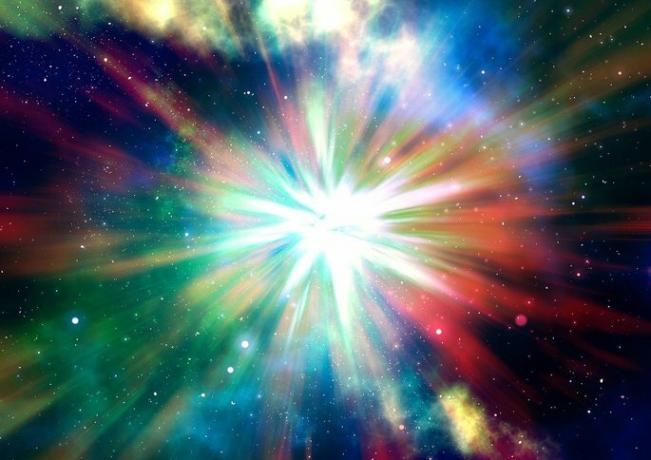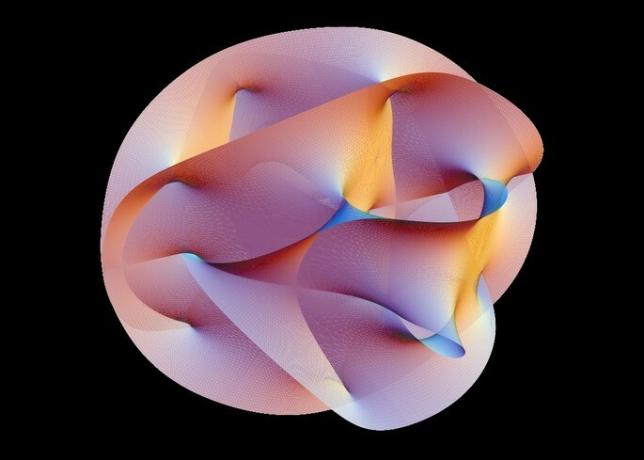The origin of the universe is a subject disputed by several theories, among them, the most accepted by science today is the Big Bang theory.
However, there are other theories that go beyond the explosion that gave rise to everything that exists. Some scientists propose an adaptation of the Big Bang, others point out new ways to answer the question “where do we come from?”.
1. Big Bang Theory
According to the Big Bang theory, the universe would have its origin between 13.7 and 14 billion years ago, from a great explosion.
This explosion started with a singularity, a single atom (primordial atom) infinitely dense and very hot, which concentrated a lot of energy, exploded and gave rise to the universe.
From the explosion of this very high density and temperature core, the universe entered a state of expansion, cooling and formation of matter. Thus, galaxies, stars and planets originated.

This answer to the origin of the universe was elaborated by the Belgian astronomer George Lemaître (1894-1966), based on the theory of relativity proposed by Albert Einstein.
The expanding universe proposed by Lemaître, was confirmed by Edwin Hubble (1889-1953), more distant galaxies moving away at a greater speed than the closer ones (Hubble's Law).
Thus, the Big Bang would have started space-time as we know it, making the existence of a previous moment impossible.
2. Looped quantum gravity
While the Big Bang theory is based on Einstein's relativity, loop quantum gravity is based on quantum physics.
At first, this thought reorganizes the idea of space-time continuity proposed by the theory of relativity. Thus, space-time would be granular and these "grains" would be arranged next to each other, giving an impression of continuity.
Therefore, there would not be a singularity, as in the Big Bang, but a "great encounter" of a collapsing earlier universe, similar to a black hole.
3. Theory M
M Theory is based on general relativity and the idea of quantum mechanics and seeks to unite five different theories of superstrings and super gravity.

With this, the different theories would all be essentially correct and, for this, it is necessary to understand the existence of 11 simultaneous dimensions (10 dimensions and time). Of these dimensions, only four are accessible (x, y, z and time axes).
The other dimensions would be curled up and inaccessible to human knowledge, but their effects would influence the development of other possible universes.
Thus, our universe, according to M-Theory, is part of a multiverse made up of countless others, which move away, expand, collide and start over.
4. cosmological natural selection
According to cosmological natural selection, the origin of the universe would be an extension of Darwin's theory.
Thus, for the theoretical physicist Lee Smolin, creator of the theory, there are several variables that would make the organization of the universe and the emergence of life impossible.
The way to regulate this chance would be the existence of a cosmological selective process that allowed our universe to emerge from a very similar one.
5. oscillating universe
The oscillating universe theory states that the Big Bang is just the beginning of an expansion process, which is still present. However, the energy released by the great explosion that gave rise to this universe has a limit.
In this scenario, the gravitational effect of the bodies acts as an anti-expansion force. At some point, the gravitational force will become greater than the energy generated by the explosion, giving rise to the reverse process, of shrinkage.
The retraction of the universe will culminate in the opposite of the Big Bang, the "Big Crunch". This process will link a singularity and a new Big Bang. This oscillation may have occurred countless times, this universe being one among many others.
See too:
- Big Bang Theory
- Theory of relativity
- Milky Way
- Stephen Hawking

